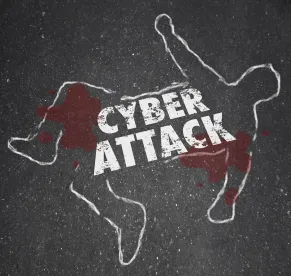The massive cyberattack targeting computer systems of businesses, government agencies and citizens in more than 150 countries is now being linked to the North Korean government. Called WannaCry, the ransomware encrypts the victim’s hard drive and demands a ransom to be paid in the virtual currency bitcoin equivalency of about $300.
According to the Washington Post:
Several security researchers studying “WannaCry” on Monday found evidence of possible connections to, for instance, the crippling hack on Sony Pictures Entertainment in 2014 attributed by the U.S. government to North Korea. That hack occurred in the weeks before Sony released a satiric movie about a plot to kill North Korean leader Kim Jong Un.
The New York Times reported that the malicious software was transmitted via email and stolen from the National Security Agency. It targeted vulnerabilities in Windows systems in one of the largest ransomware attacks on record. The virus took advantage of a weakness in Microsoft’s Windows operating system. Although the flaw was patched by the company, not all users had applied the update.Institutions and government agencies affected included the Russian Interior Ministry, FedEx in the United States and Britain’s National Health Service.
The attack is the latest in a growing trend. In February, Hollywood Presbyterian Medical Center was crippled by a cyberattack that encrypted patient and laboratory records and took all network and computer-related functions, including CT scans, lab work, pharmaceutical activity and patient records, offline for more than a week.
Meanwhile, governments and organizations are advised to save their data and take other measures to avoid being hacked. Kroll said that while the particular ransomware variation involved in tens of thousands of incidents has now been rendered largely harmless, its cyber security and investigations team “strongly recommends that organizations recognize that a small change in the malware code could reactivate it. So action should be taken in conjunction with your technology unit to reduce your risk and prepare for inevitable future similar attacks. If the malware has entered your network, it has the ability to spread—and spread rapidly.”
According to Kroll:
-
Obsolete versions of Microsoft Windows are particularly vulnerable. We understand that there may be very specific circumstances that require you to use versions that are no longer supported, but now is the time to revisit the topic. See if there is any way you could use a supported operating system running a virtual version of the operating system you need.
-
Microsoft has been working to roll out updates that can fix the underlying security weakness that this malware exploits. You should make sure that both your personal and business machines running Windows are updated. We know that many people don’t want to take the time to close out all their files and restart their computers to allow updates to occur, but this is an important defense against the WannaCry ransomware. As an indicator of how serious the threat is, note that Microsoft has even released a security patch for the old Windows XP system. Please take steps to assure that all relevant machines running the Windows operating system are updated.
-
Organizations that don’t have well-thought-out backup and recovery plans are also very vulnerable. Management should be asking if there is a plan to assure that all important files are backed up in a way that will prevent a ransomware infection from attacking both the primary files and the backups.
President Trump ordered homeland security adviser, Thomas P. Bossert to coordinate a government response to the spread of malware and find out who was responsible. According to the Times:
“The source of the attack is a delicate issue for the United States because the vulnerability on which the malicious software is based was published by a group called the Shadow Brokers, which last summer began publishing cybertools developed by the National Security Agency.”
Government investigators, while not publicly acknowledging that the computer code was developed by American intelligence agencies, say they are still investigating how the code got out. There are many theories, but increasingly it looks as though the initial breach came from an insider, perhaps a government contractor.
In a report, How to protect your networks from Ransomware, the U.S. government recommends that users and administrators take preventative measures, including:
-
Implement an awareness and training program. Because end users are targets, employees and individuals should be aware of the threat of ransomware and how it is delivered.
-
Enable strong spam filters to prevent phishing emails from reaching the end users and authenticate inbound email using technologies like Sender Policy Framework (SPF), Domain Message Authentication Reporting and Conformance (DMARC), and DomainKeys Identified Mail (DKIM) to prevent email spoofing.
-
Scan all incoming and outgoing emails to detect threats and filter executable files from reaching end users.
-
Configure firewalls to block access to known malicious IP addresses.
-
Patch operating systems, software, and firmware on devices. Consider using a centralized patch management system.
-
Set anti-virus and anti-malware programs to conduct regular scans automatically.
-
Manage the use of privileged accounts based on the principle of least privilege: no users should be assigned administrative access unless absolutely needed; and those with a need for administrator accounts should only use them when necessary.
You can review this press release in its original here.



 />i
/>i
